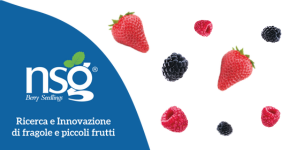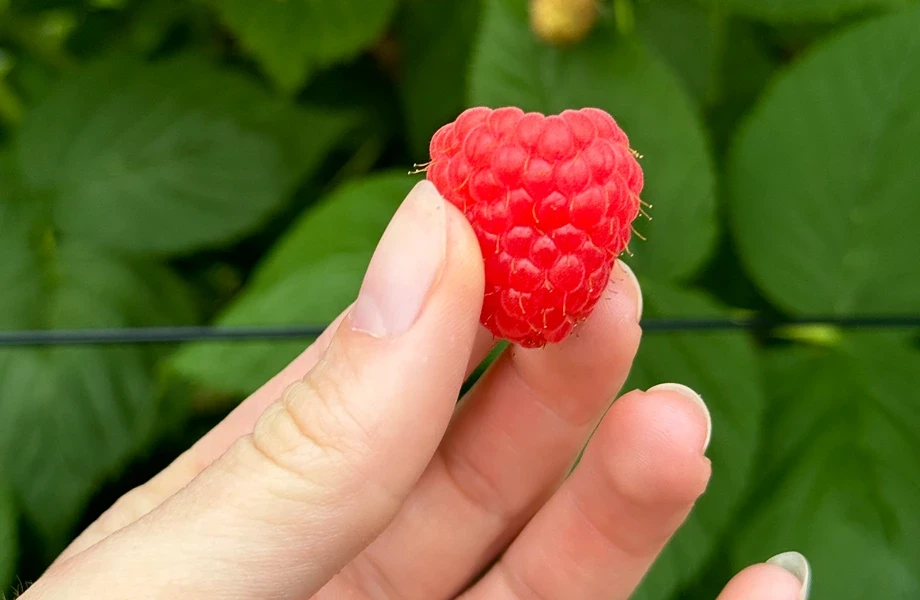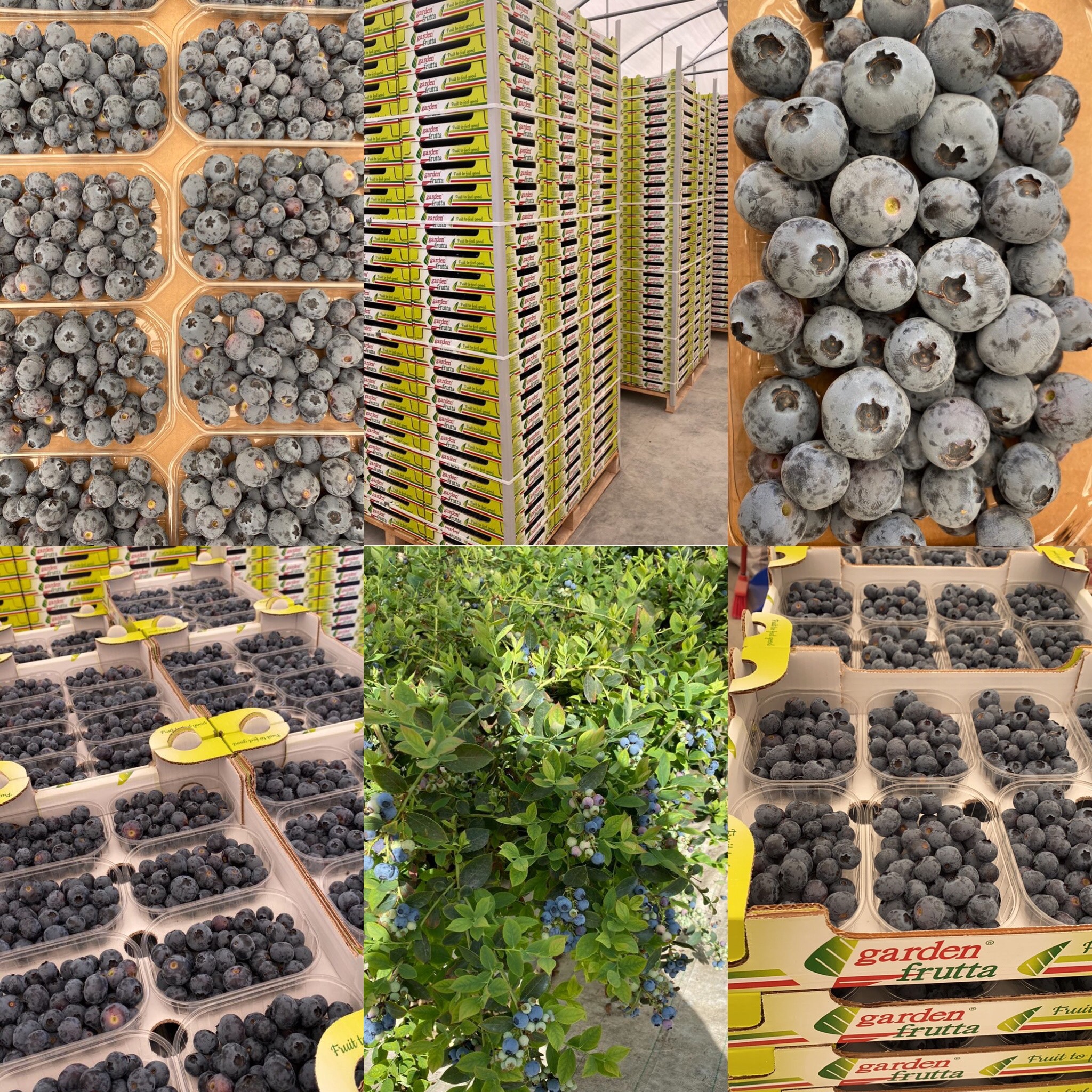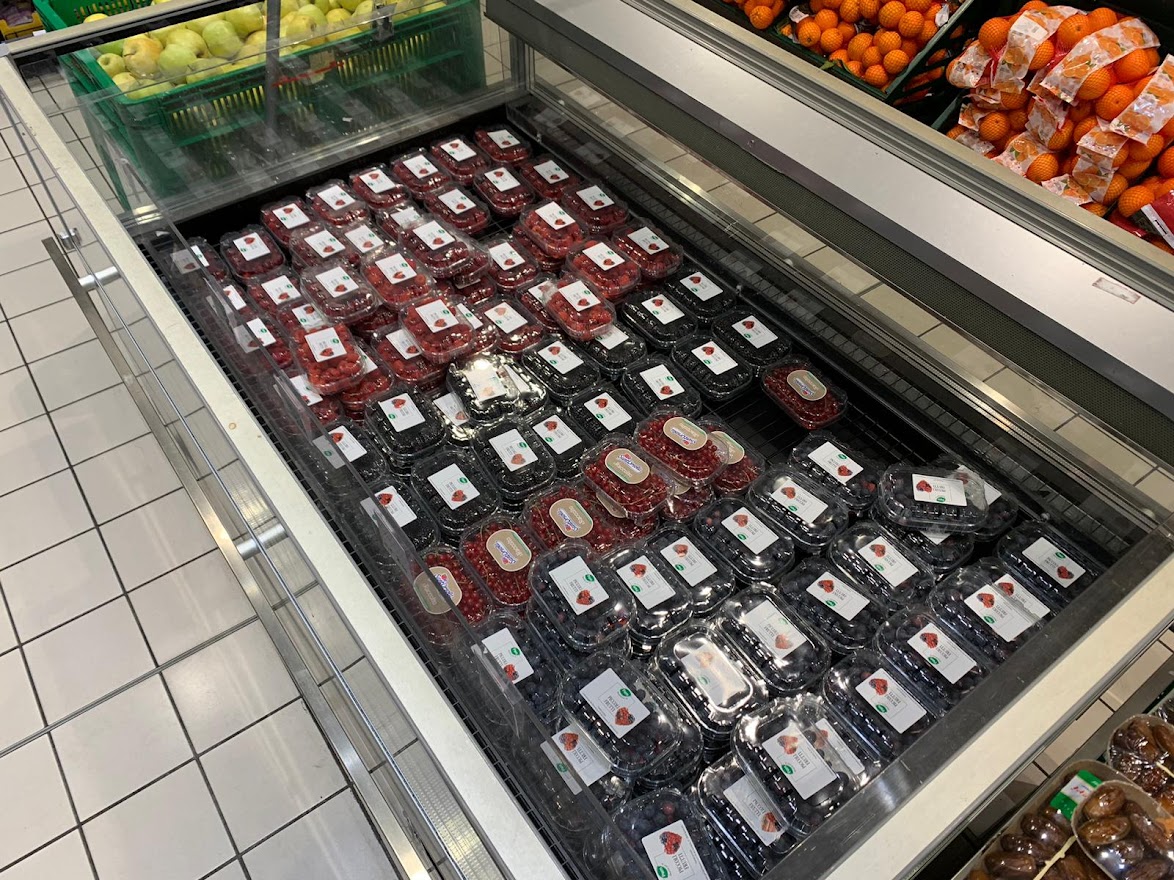By Jorge Duarte | Hortitool Consulting
The European raspberry breeding landscape has undergone a seismic transformation. From its public-sector foundations to the highly privatized, IP-driven ecosystem of 2025, genetic innovation in raspberries now balances between open-access initiatives and tightly controlled commercial programs. This article critically analyses the trajectory, current structure, and future prospects of raspberry breeding in Europe.
The public legacy: foundations of European raspberry genetics
For decades, institutions like the James Hutton Institute (Scotland) and NIAB EMR (England) served as the cornerstones of raspberry breeding.
Their pioneering work in floricane-fruiting varieties such as 'Glen Moy' and 'Glen Ample' emphasized yield stability, climate adaptation, and resistance to Raspberry Bushy Dwarf Virus (RBDV). Rooted in a philosophy of open germplasm, these efforts democratized breeding access and laid a foundation for later innovation.
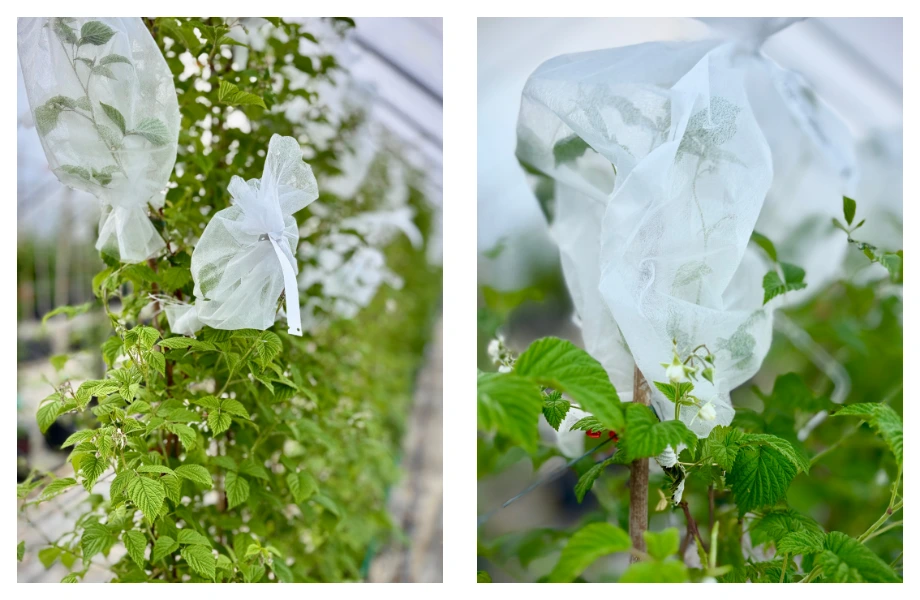 Pollination of raspberry flowers (photo: Niwa)
Pollination of raspberry flowers (photo: Niwa)
The rise of private breeding: club varieties and closed pipelines
The early 2000s marked a pivotal shift with the emergence of primocane types and year-round tunnel cultivation. Private entities such as Driscoll’s, Planasa, BerryWorld Plus, and Advanced Berry Breeding (ABB) rapidly took center stage. Their portfolio of club varieties—including 'Adelita', 'Maravilla', 'Diamond Jubilee', and 'Kwanza'—prioritized high yield, shelf life, and visual appeal, albeit within tightly regulated Intellectual Property (IP) frameworks.
This consolidation limits germplasm access for smaller players and raises questions about long-term genetic diversity. Growers increasingly voice the need for a broader genetic base and access to alternative breeding material.
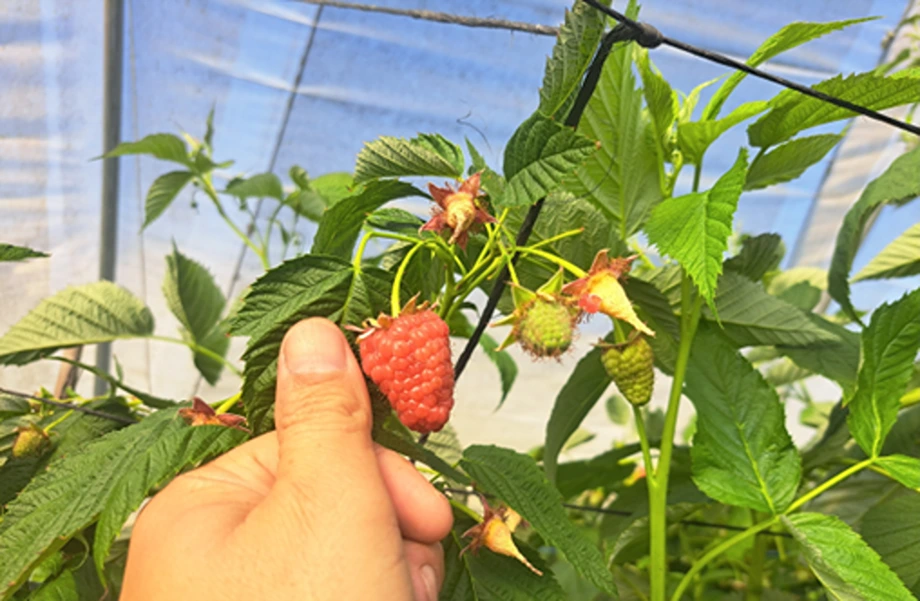 Amalia Rossa (Berryplant) in substrate, Portugal (photo Jorge Duarte)
Amalia Rossa (Berryplant) in substrate, Portugal (photo Jorge Duarte)
Democratization through regulation: the EU's role
European legislation permits breeding from seeds extracted from commercially available fruit. This provision empowers small-scale breeders, nurseries, and independent growers to initiate breeding programs. Compliance with DUS (Distinctness, Uniformity, Stability) testing and phytosanitary standards ensures market legitimacy.
Regions such as Spain and Italy have embraced this opportunity, fostering a proliferation of independent breeding initiatives since the mid-2000s.
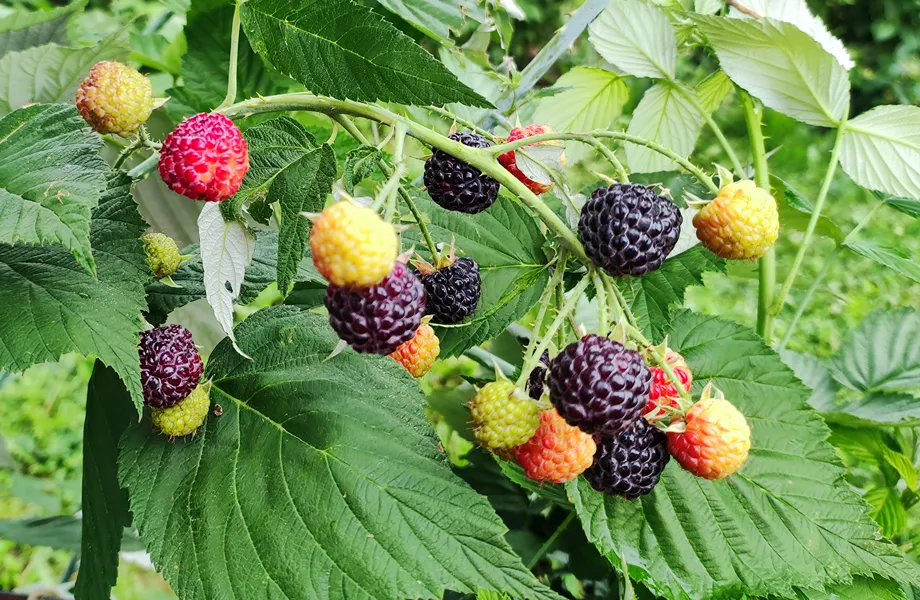 Black raspberry in a selection field (photo: Niwa)
Black raspberry in a selection field (photo: Niwa)
The hybrid model: nurseries as breeders
A growing number of nurseries now bridge propagation and genetic development:
- NIWA Berry Breeding Ltd. (Poland): Conducts over 250 annual Rubus crosses using molecular markers for traits such as RBDV resistance and anthocyanin content.
- Sant'Orsola (Italy): In-house breeding of 'Lagorai Plus' and 'Vajolet' for soilless tunnel systems.
- Berryplant (Italy): Offers proprietary varieties like 'Amira', 'Clarita', and 'Amalia Rossa'.
- Vival Molari / GBerries (Italy): Developed 'Ensoradira'.
- Lucchini Berries (Italy), breeder of 'Easy Star', and 'Easy Rock'.
- Mattivi Group (Italy): Focused on red raspberry innovation with varieties like 'Serena', 'Nives', and 'Dolcevita'.
- Lubera (Switzerland): Specializes in niche and home gardening cultivars.
- Viveros California (Spain): Primocane varieties (‘Alegría’ & ‘Abril’) offer year-round versatility and strong flavor/quality, ideal for modern extended-season production. The floricane raspberry San Rafael remains a plum choice for conventional biennial systems, focusing on fruit size, consistency, and taste.
- FNM (Fresas Nuevos Materiales S.A, Spain) introduced its first raspberry variety, Noelia in the 2021–22 season, representing FNM’s diversification beyond strawberries, it shows versatility in harvest, supporting production operations that require off-season fruit production.
Genetic bottlenecks vs. innovation potential
Despite a democratized entry point, the genetic pool remains constricted. Leading private programs, such as Planasa (with ~225 registered varieties), tend to recycle elite lines. Without funding mechanisms targeting flavor, disease resistance, and climate resilience, innovation risks stagnation.
Public-private initiatives like EUBerry and BreedingValue address these gaps through germplasm scanning and trait-based selection. However, their commercial impact remains limited by scalability and market penetration.
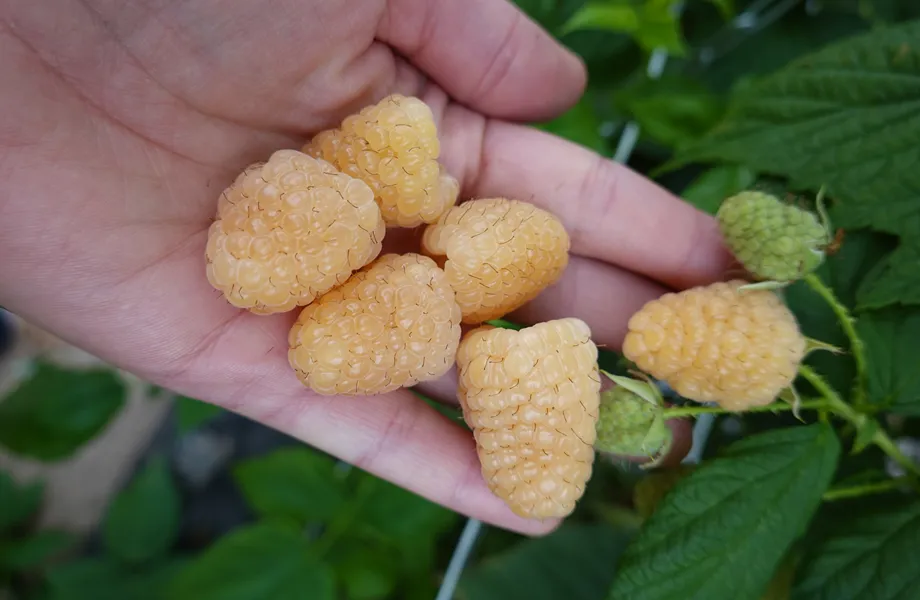 Yellow raspberries (photo Niwa)
Yellow raspberries (photo Niwa)
Industry leaders and strategic influence
Key market influencers include:
- Planasa (Spain): Proprietary varieties like 'Adelita' and the new 'Pink Hudson'.
- Driscoll’s: Global leader with primocane dominants 'Maravilla', 'Yasmin', and 'Reyna', especially in Morocco.
- BerryWorld Plus/Edward Vinson (UK): Vertical model combining breeding and marketing of 'Diamond Jubilee', 'Sapphire'.
- Advanced Berry Breeding (Netherlands): Portfolio includes 'Kwanza', 'Rafiki', 'Malaika'.
- NIWA (Poland): Robust molecular-assisted breeding infrastructure.
- Marionnet Label (France): Focused on flavor with varieties like 'Pink Star'.
- East Malling Rubus Breeding Consortium (UK): 'Malling Bella', 'Malling Charm', operating within a semi-closed partnership model.
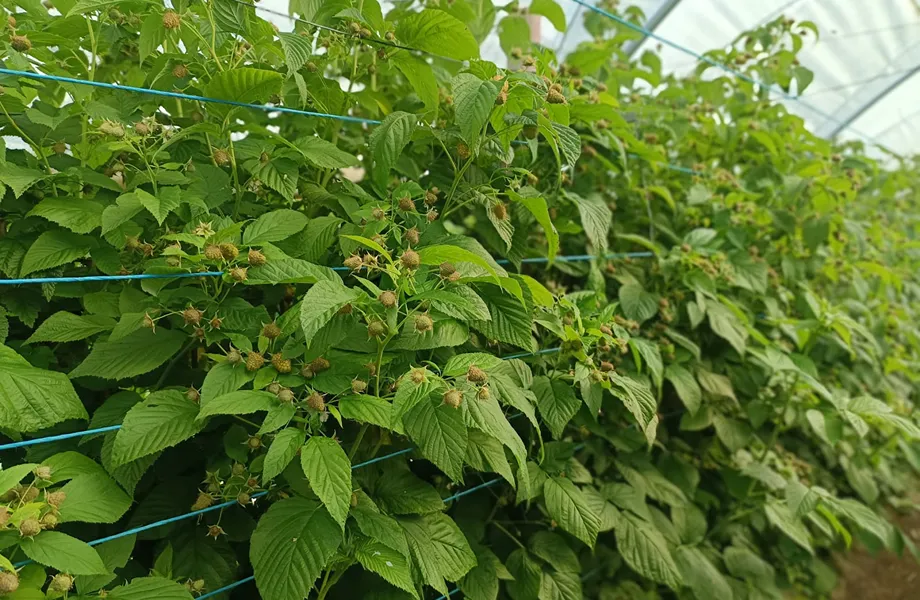 Enrosadira (G-Berries) in soil production, Portugal (photo Jorge Duarte)
Enrosadira (G-Berries) in soil production, Portugal (photo Jorge Duarte)
Market overview and production trends
- EU raspberry + blackberry market (2024): €1.3 billion (+1.7% YoY)
- Consumption: 175,000 tonnes (2024), down 4.2% from 2023
- Production: ~114,000 tonnes in 2024, down 1.5% YoY
- Leading producers:
- Spain: 46,000 t (40%)
- Portugal: 37,000 t (32%)
- Poland: 17,000 t (15%)
- Imports: 204 000 t valued at € 1.67 billion
- Exports: 143 000 t generating US €1.21 billion (led by Spain and Portugal)
A fork in the genetic road
As detailed above, the evolving landscape of raspberry production in Europe reveals a growing trend: nurseries and growers are increasingly internalizing breeding programs to gain control over intellectual property (IP). By developing proprietary cultivars, these stakeholders reduce dependence on global breeders such as Driscoll’s or Planasa—whose exclusive varieties often come with high royalty fees and restrictive licensing terms.
This shift aims not only to lower production costs and improve profit margins but also to generate cultivars specifically adapted to local climatic conditions, regional pest pressures, and extended post-harvest shelf life. Additionally, many of these players are adopting vertically integrated models that unify breeding, propagation, and commercial production.
Such integration ensures better consistency, accelerates the innovation pipeline, and provides a distinctive market advantage in an increasingly competitive fresh fruit sector.
At this pivotal moment, Europe finds itself at a crossroads. While the technical capacity to expand raspberry genetic diversity exists, current IP frameworks and market-driven consolidation constrain the scope of innovation. Unlocking the next wave of breakthroughs will require a realignment—one that connects supportive policy frameworks, breeder empowerment, and market demand for resilient, high-quality, and diverse cultivars.
The future of raspberry genetics may well be shaped not by multinational powerhouses, but by the intersection of small-scale initiatives, strategic regulatory flexibility, and collaborative public-private investment.
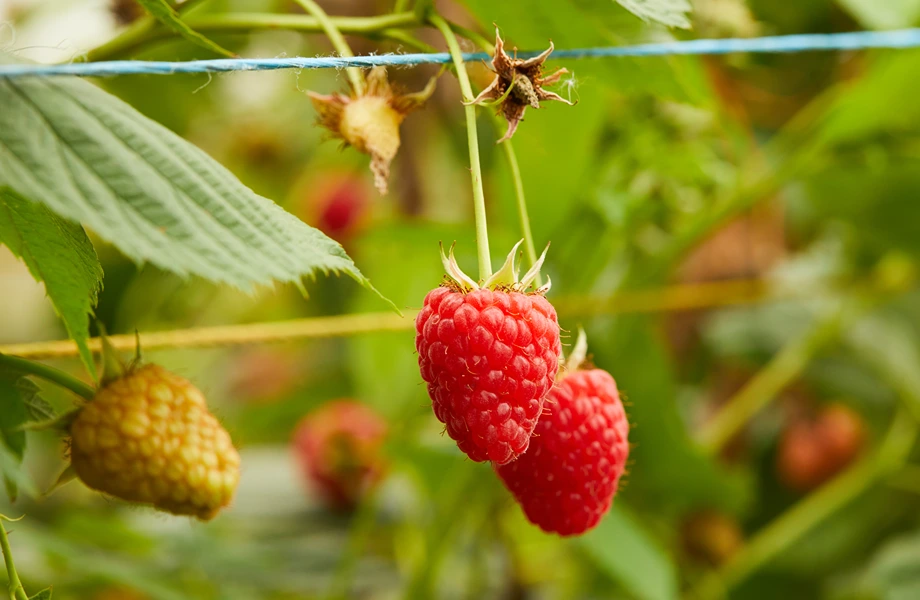 Driscoll's raspberries (photo: Driscoll's)
Driscoll's raspberries (photo: Driscoll's)
References
- Planasa. (2023). Planasa Official Website.
- Fruitnet. (2023). Planasa Eyes Expansion in Berries.
- Community Plant Variety Office (CPVO). (2024). CPVO Variety Database.
- Advanced Berry Breeding (ABB). (2024). ABB Varieties Overview.
- Fruitnet. (2024). Zawadi Raspberry Expands in Europe.
- Earth Market. (2024). Earth Market Official Website.
- Agrovision. (2024). Agrovision Global.
- Freshplaza. (2023). Pink Star Raspberry Brand Launch.
- Global Plant Genetics. (2024). Raspberry Varieties.
- NIAB. (2023). Malling Fruit Varieties.
- NIAB. (2023). Malling Bella Raspberry.
- Genson Quality Plants. (2024). Planting Material.
- CORDIS EU. (2021). QUALIREDFRUITS Project.
- BreedingValue. (2024). BreedingValue EU Project.
- KWS Saat. (2024). Innovation and R&D.
- Rijk Zwaan. (2024). Official Website.
- Eurostat. (2024). Agricultural Statistics.
- IndexBox. (2024). Berries Market Report.
- Verified Market Research. (2024). Market Research Reports.
Cover photo: Driscoll's



